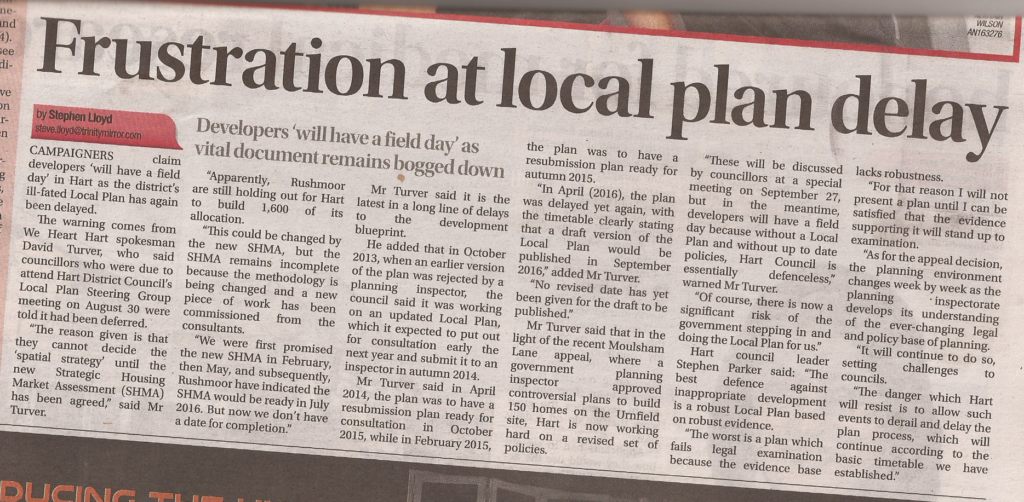
It has come to light that Hart Council is seeking to plan for more houses than we actually need to build, contrary to the approach taken by neighbouring East Hampshire council.
The agenda for this week’s council meeting has been published and includes the following motion:
That the Council resolves that through its Local Plan it will seek to meet Hart’s full, objectively assessed need for new homes, subject to the inclusion of an appropriate contingency to allow for any delays or the non-delivery of sites, and that it will also seek to accommodate any demonstrated unmet need for new homes from its Housing Market Area partners.
There is no reason to argue with meeting the objectively assessed need. However, it is not clear how big the contingency will be, nor how the use of the contingency will be controlled. Indeed, given that earlier this year there were over 3,000 dwellings that had been granted permission, but not yet built, it is not clear why the council must give further ground to the developers by planning for any contingency at all.
We were curious whether the inclusion of a contingency was normal practice. We took a look at neighbouring East Hampshire who are producing the Local Plan for Hart and recently adopted their own Local Plan. It turns out that East Hampshire doesn’t have a contingency and the total of their allocated sites (9,146) doesn’t even appear to add up to the total housing target (10,370). So, the question remains, why does Hart need to plan for a contingency?
East Hampshire have a SHMA that identifies a ‘need’ of between 520 and 610 dwellings per annum, or a total of between 8,840 to 10,370 houses in their plan period. See page viii of the non technical summary:
They also had a Joint Core Strategy (JCS) that has settled on an objective need of 10,060 houses, see section 6.7:
It appears as though the JCS was upgraded slightly upon examination to the highest figure in the SHMA of 10,370
Their actual Local Plan uses this 10,060 number as a minimum, states 10,370 as the target, but only allocates sites up to a total of 9,146. That is to say, less than the minimum target. See section 1.24 and Appendix 2:










